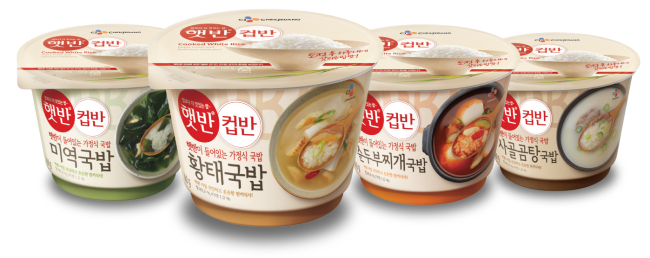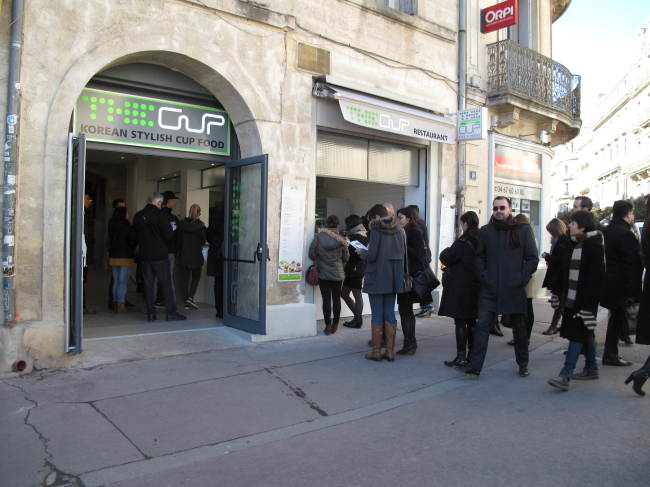Korean ‘cup food’ appeals to global tastes
Quick and easy Korean takeout is growing trendy overseas
By Won Ho-jungPublished : March 24, 2016 - 11:47
In Korea, the “cup food” phenomenon has long been a big part of the fast-paced lifestyle here, but it has lately been growing popular abroad too.
“Cup food” is a Korean term referring to one-dish meals that are usually sold in a small container – including paper boxes and cartons -- to allow customers to eat on the go. It originated from the many carts that line the streets of Seoul, offering quick bites and simple meals in paper cups.
“Cup food” is a Korean term referring to one-dish meals that are usually sold in a small container – including paper boxes and cartons -- to allow customers to eat on the go. It originated from the many carts that line the streets of Seoul, offering quick bites and simple meals in paper cups.

One local food brand The Cup, which was launched in June 2011, has been expanding abroad. Earlier this month, The Cup opened a new store in Montpellier – the first Korean franchise in the city in southern France. It is currently in six overseas markets: Indonesia, Hong Kong, Singapore, France, China and the U.S.
The Cup’s menu is based on traditional Korean food. It also offers variations that combine Korean-style ingredients like kimchi with the cuisine of other countries, such as Japanese-style teriyaki and Italian meatballs.
“We felt confident about going overseas because we were not insisting on just traditional Korean food, but wanted diversity in our menus,” said a spokesman for The Cup.
Concepts similar to Korean cup food are also taking hold in European and North American markets. French pasta chain “Mezzo di Pasta” sells quality cooked meals in small portions in 11 international markets, including Korea.

Meanwhile, Kim Young-bum, the Paris Center manager for Korea Agro-Fisheries & Food Trade Corp., said at the opening ceremony of The Cup’s Montpellier branch that he is looking forward to the success of fresh and convenient Korean cup food in the city where there is a large population of young people.
Cup food has its roots in areas of Seoul with large numbers of private academies that help individuals prepare for tests, such as Noryangjin and Daechi-dong. Students often looked for cheap, quick yet substantial meals in-between sessions at their cram schools. They would line up in front of trucks that sold fried rice or stir-fried noodles in disposable cups.
These days, cup food is no longer just street food. The simple meals are cooked in proper kitchens, and cup-food chains have merged street food with a healthy and sanitary image.
Food manufacturer CJ CheilJedang has a different approach to the cup food trend. In 2015, the company released “Cupban” under its flagship instant rice line “hetban.”
The “Cupban” line offers instant rice with Korean soups such as seaweed soup and tofu stew.
According to a statement from CJ CheilJedang, “Cupban” products have showed strong sales in areas previously dominated by instant noodles, showing that there is a “consumer need for home meal replacements with good rice.”

“Cupban” also appears to be taking off in Russia, where it was launched in May last year. According to CJ CheilJedang, sales have grown 20 percent monthly in eastern Russia. The company will start distributing “Cupban” products to other parts of Russia, such as Moscow, by this year.
By Won Ho-jung (hjwon@heraldcorp.com)


















![[Today’s K-pop] Treasure to publish magazine for debut anniversary](http://res.heraldm.com/phpwas/restmb_idxmake.php?idx=642&simg=/content/image/2024/07/26/20240726050551_0.jpg&u=)